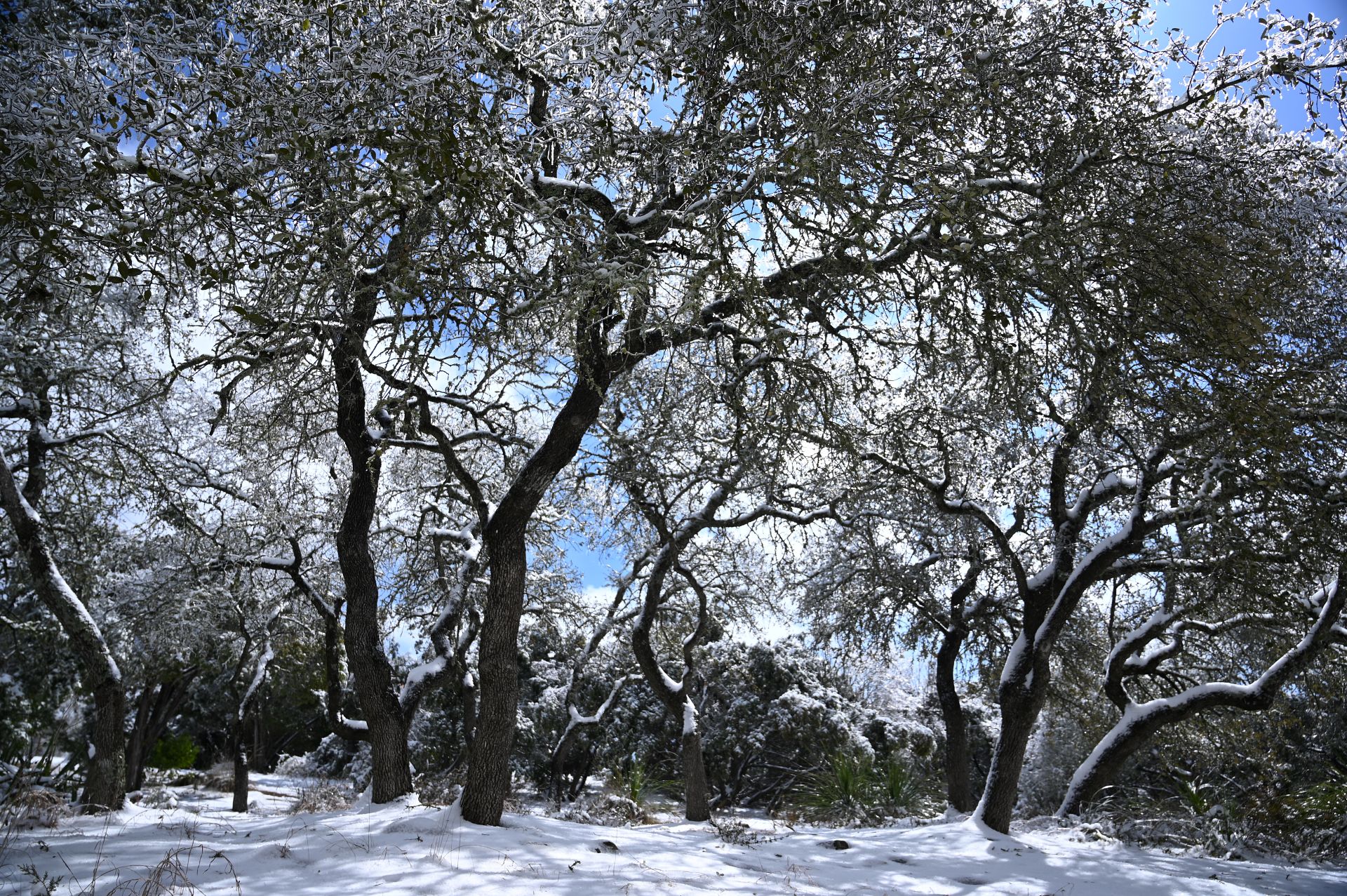Texas is a state that has seen increasingly extreme winter weather in recent years. In the past five years alone, temperatures have dipped far below freezing more often than in previous decades.
This trend of extended cold snaps is expected to continue. The February 2023 winter storm has left properties and streets littered with downed tree branches of our beloved live oaks. This event worsened because many trees haven’t recovered from the 2022 drought and previous years’ winter conditions. Because the trees were weaker, they were left at increased risk. Many aren’t leafing, while some appear healthier than ever.
So as many are still dealing with the cleanup, there are some things to be aware of in the recovery process to save what’s left of your trees and prepare them for future storms.
About Live Oaks in Texas
Texas is home to a wide variety of oak trees, but live oaks are especially prevalent in the state. The Lone Star State hosts 50+ species of oak and approximately fifteen million acres of oak forest, making it one of the most diverse regions for oak trees in the world.
Oak trees are beloved for their beauty, longevity, and variety. This winter’s storms challenged these tough trees, as the freezing rain and ice weighed heavy on their usually strong branches and leaves. Most oak trees are deciduous—shedding their leaves seasonally Live oaks, however, are nearly evergreen and shed their leaves for only brief periods in the spring. Live oaks were particularly susceptible to the ice storm because their abundant leaf surfaces provided a sufficient area for ice to adhere.
“Once ice buildup starts getting to the levels that we’re at, with a quarter inch or half an inch, that’s just a lot of weight that’s being put on these trees,” Motsinger, who serves as the Central Texas department head for the Texas A&M Forest Service, says. “The only way for them to relieve the stress and the weight is to break.” (Texas Monthly Article)
What to do With Live Oaks Post-Winter Storm
Now that winter has passed and the weather is starting to warm up, it’s time to take care of your live oak trees and ensure they are in good condition after the storm to recover and be in better shape for future storms fully.
Assess the damage done by the storm.
Look for broken branches or snapped limbs that may have fallen due to ice accumulation and any other visible signs of damage. If you notice any shattered bark or split trunk, you should immediately contact a professional tree trimming service or arborist.
The larger a broken limb is, the harder it will be for the tree to recover from the damage. The tree may have little chance of surviving if most of the main branches are gone. Unless the tree is downed or causing damage to physical structures, the best advice is to wait and see how the trees respond during the spring green-up – you may be surprised.
Clear debris around the tree’s base, including leaves and twigs that could be blocking light or trapping moisture beneath them. Overwatering can lead to root rot, so make sure there aren’t any large puddles of water near your live oak after a rainstorm has passed.
A professional can also help with pruning and other maintenance tasks, such as removing dead branches and thinning overcrowded parts of the tree. This will ensure the tree can receive proper airflow and sunlight.
While painting fresh wounds on oak trees is important to prevent the spread of oak wilt, wounds caused by the ice storm are no longer fresh. In cold conditions, trees quickly stop exuding sap, and sap-feeding beetles are not active, so it is unlikely that oak wilt will spread due to an initial ice storm event. But do paint new wounds from post-storm pruning, particularly if pruning takes place in the spring.
Protecting Live Oak Trees from Future Winter Storm Damage
To protect your trees further against future storms, consider providing additional support with guy wires or cables connected to sturdy posts or stakes driven into the ground at least two feet away from the trunk. You can also wrap burlap around vulnerable branches in early winter when temperatures drop below freezing point, but this may not be necessary if temperatures remain mild throughout the wintertime. Finally, fertilize your live oak trees regularly during the summer months, so they have enough energy reserves for when winter comes back again next year!









